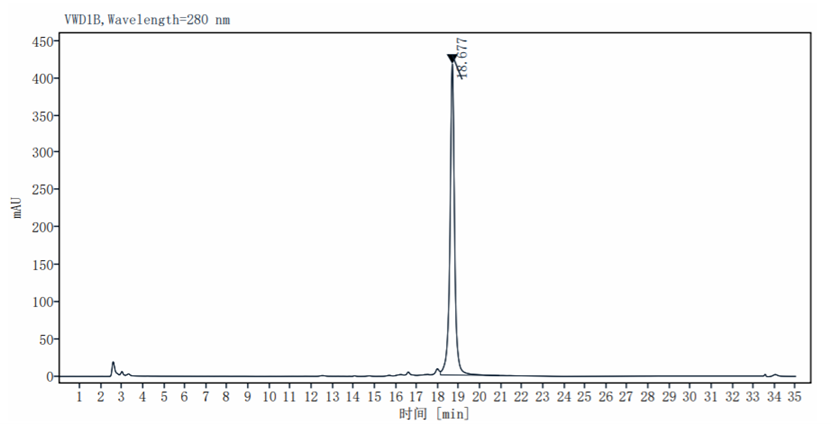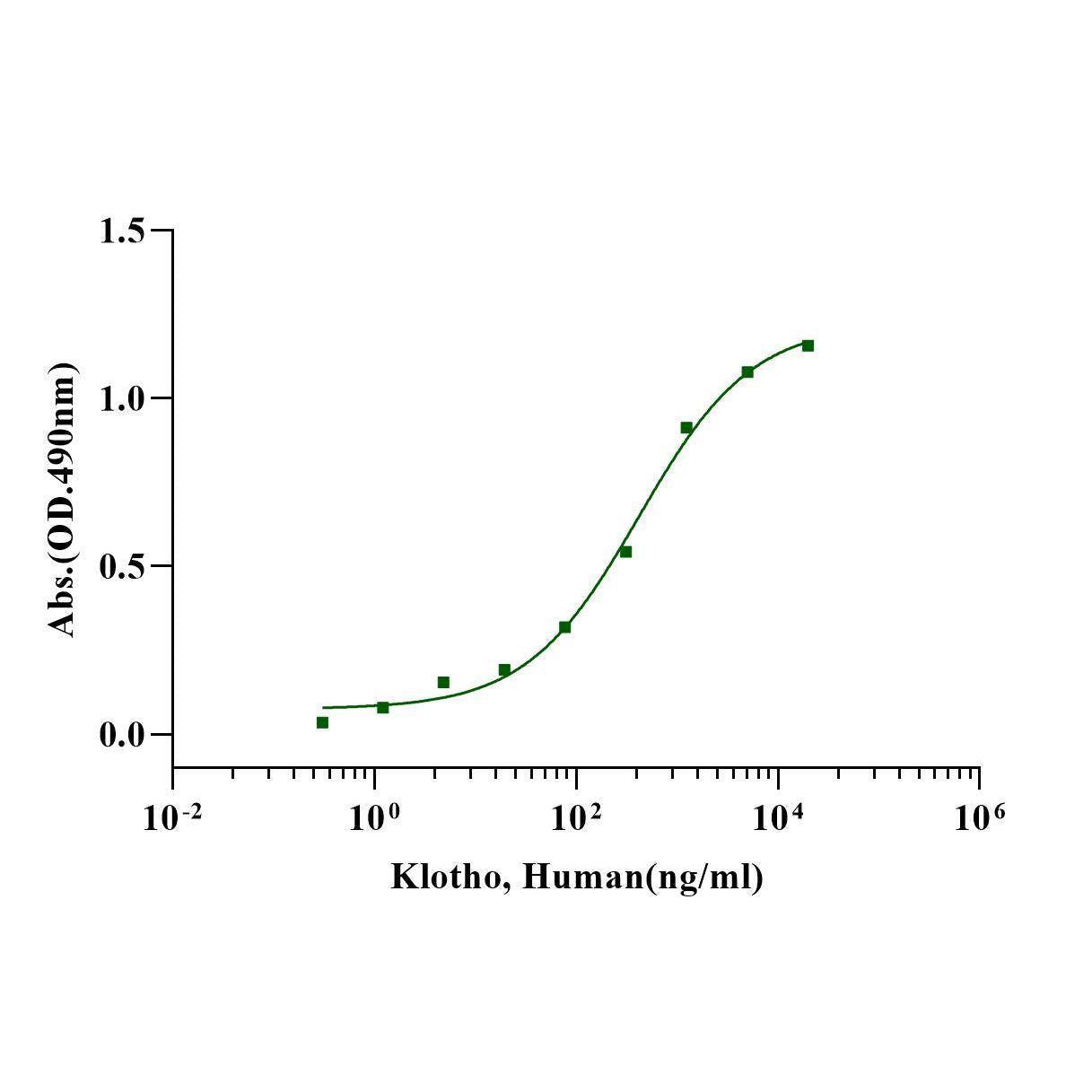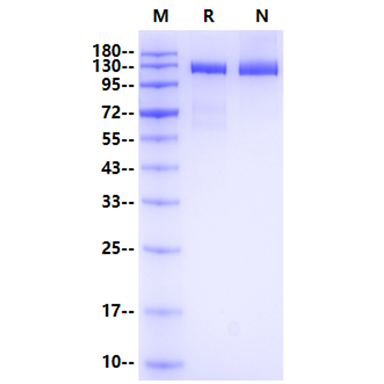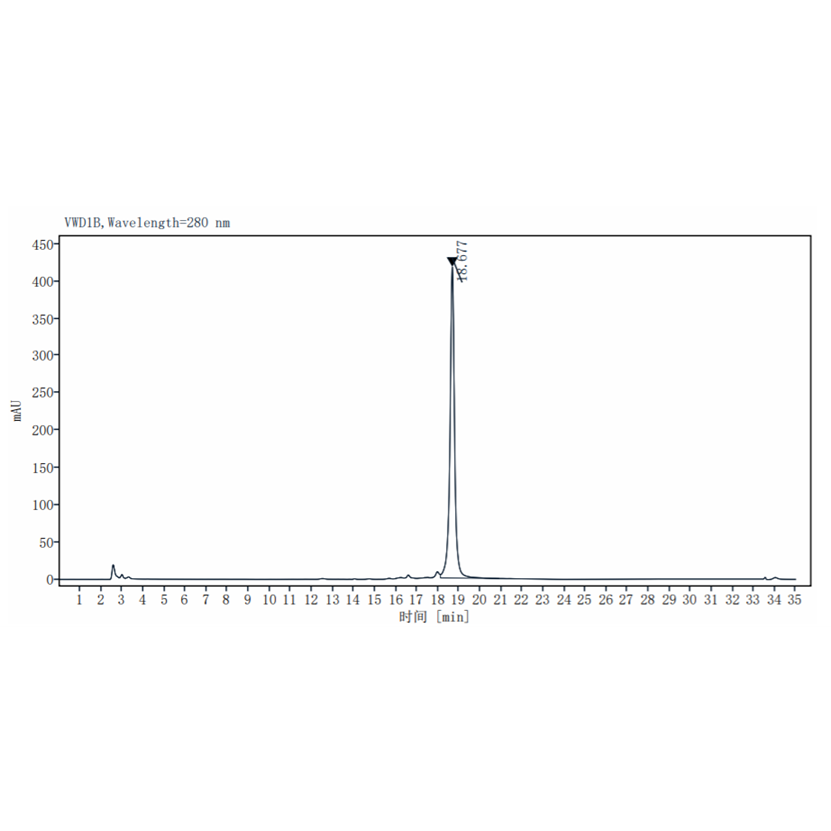The EC50 as determined by the dose-dependent stimulation of the proliferation of murine NIH/3T3 is less than 1μg/ml.
Product Details
Product Details
Product Specification
| Species | Human |
| Synonyms | α-Klotho |
| Accession | Q9UEF7 |
| Amino Acid Sequence | Glu34-Ser981, with C-terminal 10*His |
| Expression System | CHO |
| Molecular Weight | 120-140kDa (Reducing) |
| Purity | >97% by SDS-PAGE&RP-HPLC |
| Endotoxin | <0.1EU/μg |
| Conjugation | Unconjugated |
| Tag | His Tag |
| Physical Appearance | Lyophilized Powder |
| Storage Buffer | 5% (W/V) Trehalose, PBS, pH7.4 |
| Reconstitution | Reconstitute at 0.1-1 mg/ml according to the size in ultrapure water after rapid centrifugation. |
| Stability & Storage |
· 12 months from date of receipt, lyophilized powder stored at -20 to -80℃. · 3 months, -20 to -80℃ under sterile conditions after reconstitution. · 1 week, 2 to 8℃ under sterile conditions after reconstitution. · Please avoid repeated freeze-thaw cycles. |
Background
The Klotho, also known as α-Klotho, is a multifunctional protein that regulates the metabolism of phosphate, calcium, and vitamin D. Klotho may also function as a hormone. Three Klotho protein types with potentially different functions have been identified: a full-length transmembrane Klotho, a truncated soluble Klotho, and a secreted klotho. Klotho affects a number of metabolic pathways essential for pathogenesis of cardio-vascular diseases and their prevention. It inhibits lipid peroxidation and inflammation, as well as prevents endothelial injury and calcification of blood vessels. Klotho decreases rigidity of blood vessels and suppresses development of the heart fibrosis. Low level of its expression is associated with a number of diseases. Cardioprotective effect of klotho is based on its ability to interact with multiple receptors and ion channels. Being a pleiotropic protein, klotho could be a useful target for therapeutic intervention in the treatment of cardio-vascular diseases.
Picture
Picture
Bioactivity
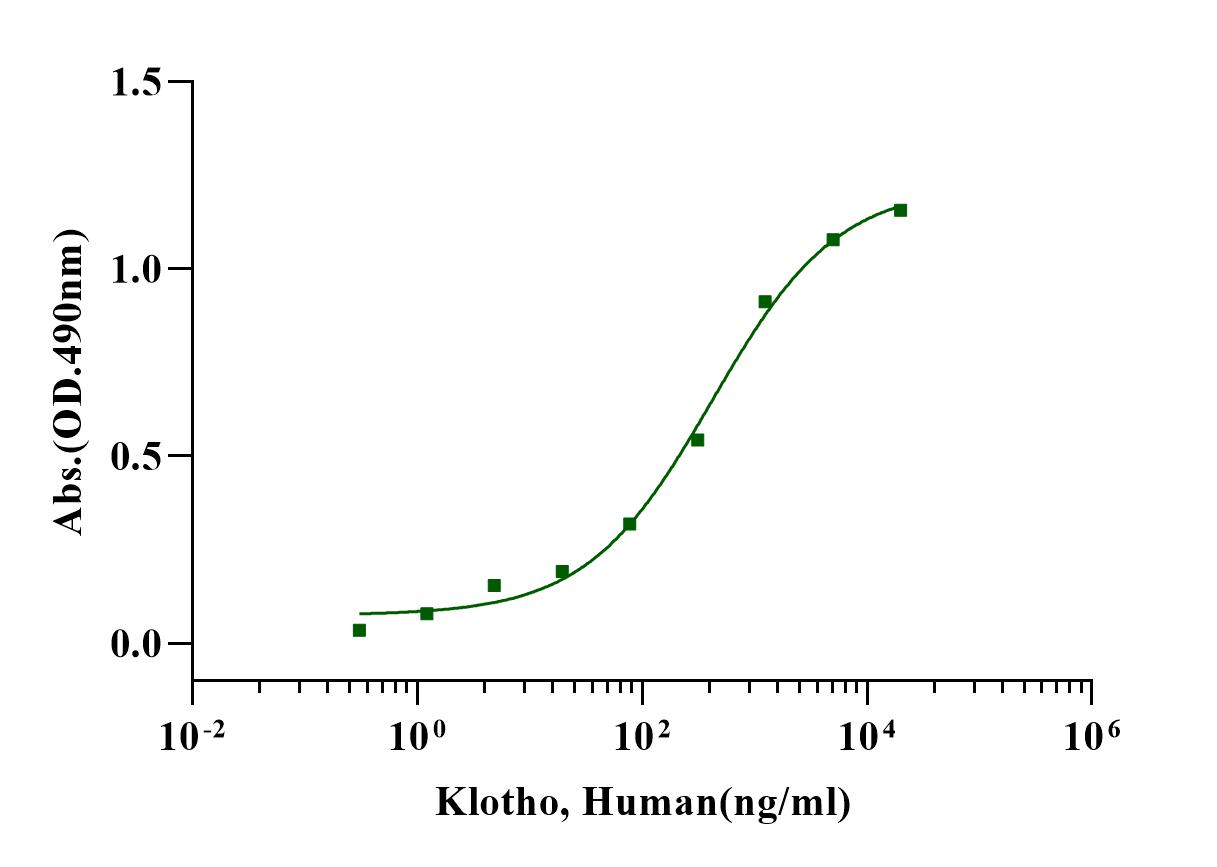
SDS-PAGE
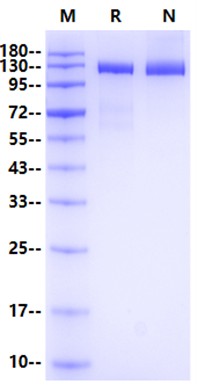
RP-HPLC
